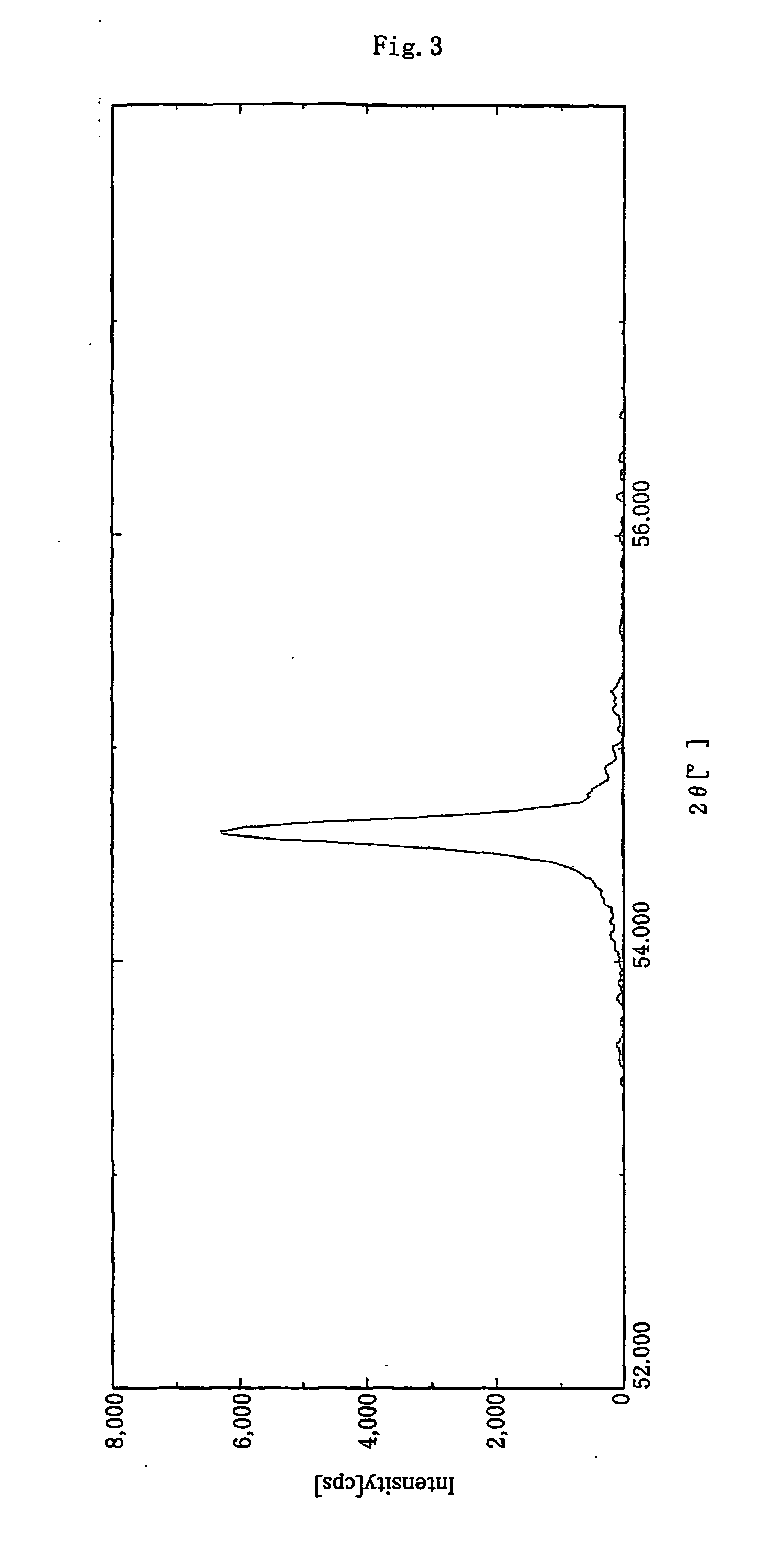Carbon material for battery electrode and production method and use thereof
a technology of carbon material and battery electrode, which is applied in the direction of graphite, non-aqueous electrolyte accumulator electrode, cell components, etc., can solve the problems of increasing irreversible capacity, reducing coulombic efficiency (i.e., initial discharge capacity/initial charge capacity), and serious practical problems such as low mass productivity, low capacity, and low cost. , to achieve the effect of large discharge capacity, less deformation/orientation, and excellent coulomb
- Summary
- Abstract
- Description
- Claims
- Application Information
AI Technical Summary
Benefits of technology
Problems solved by technology
Method used
Image
Examples
example 1
[0150] As a graphite material serving as core material, there was employed carbonaceous powder (100 g) having a laser diffraction mean particle size of 20 μm, a mean roundness of 0.88, and an area ratio of 80:20 for crystalline carbon-portion / amorphous carbon portion as determined in a bright field image observed under a transmission electron microscope. The graphite material had a BET specific surface area of 5.6 m2 / g, and a C0 of 0.6710 nm, as measured through X-ray diffraction spectroscopy. By a laser Raman spectrum of the surface of the graphite material, the peak intensity ratio for the peak intensity at 1,360 cm−1 / the peak intensity at 1,580 cm−1 was 0.21.
[0151] The graphite material (300 parts by mass), phenol (398 parts by mass), 37% formalin (466 parts by mass), hexamethylenetetramine (38 parts by mass) serving as a reaction catalyst, and water (385 parts by mass) were fed into a reaction container. The mixture was stirred at 60 rpm for 20 minutes. Air was evacuated from ...
example 2
[0155] As a graphite material serving as a core material, there was employed a carbonaceous powder (100 g) prepared by processing flake graphite material having a mean particle size of 5 μm with a hybridizer (product of Nara Machinery Co., Ltd.) for rounding the particles, and having a laser diffraction mean particle size of 15 μm, a mean roundness of 0.86, and an area ratio of 90:10 for crystalline carbon-portion / amorphous carbon portion as determined in a bright field image observed under a transmission electron microscope. The graphite particles had a BET specific surface area of 5.3 m2 / g, and a C0 of 0.6712 nm, as measured through X-ray diffraction spectroscopy. By a laser Raman spectrum of the surface of the graphite material, the peak intensity ratio for the peak intensity at 1,360 cm−1 the peak intensity at 1,580 cm−1 was found to be 0.20. The graphite powder was further treated in a manner similar to that of Example 1.
[0156] The orientation characteristics of the powders an...
example 3
[0158] As a graphite material serving as a core material, there was employed a carbonaceous powder (100 g) that had a laser diffraction mean particle size of 15 μm, a mean roundness of 0.88, and an area ratio 80:20 for crystalline carbon portion / amorphous portion as determined in a bright field image observed under a transmission electron microscope. The graphite particles had a BET specific surface area of 5.6 m2 / g, and a C0 of 0.6716 nm, as measured through X-ray diffraction spectroscopy. By a laser Raman spectrum of the surface of the graphite material, the peak intensity ratio for the peak intensity at 1,360 cm−1 the peak intensity at 1,580 cm−1 was found to be 0.22.
[0159] An ethanol solution of phenolic resin monomers (55 parts by mass in terms of resin solid) and ethanol (50 parts by mass) were mixed and stirred until the monomers were completely dissolved in water. The thus-obtained solution was added to the aforementioned carbonaceous powder so that the phenolic resin solid...
PUM
| Property | Measurement | Unit |
|---|---|---|
| crystallite size | aaaaa | aaaaa |
| crystallite size | aaaaa | aaaaa |
| crystallite size | aaaaa | aaaaa |
Abstract
Description
Claims
Application Information
 Login to View More
Login to View More - R&D
- Intellectual Property
- Life Sciences
- Materials
- Tech Scout
- Unparalleled Data Quality
- Higher Quality Content
- 60% Fewer Hallucinations
Browse by: Latest US Patents, China's latest patents, Technical Efficacy Thesaurus, Application Domain, Technology Topic, Popular Technical Reports.
© 2025 PatSnap. All rights reserved.Legal|Privacy policy|Modern Slavery Act Transparency Statement|Sitemap|About US| Contact US: help@patsnap.com



